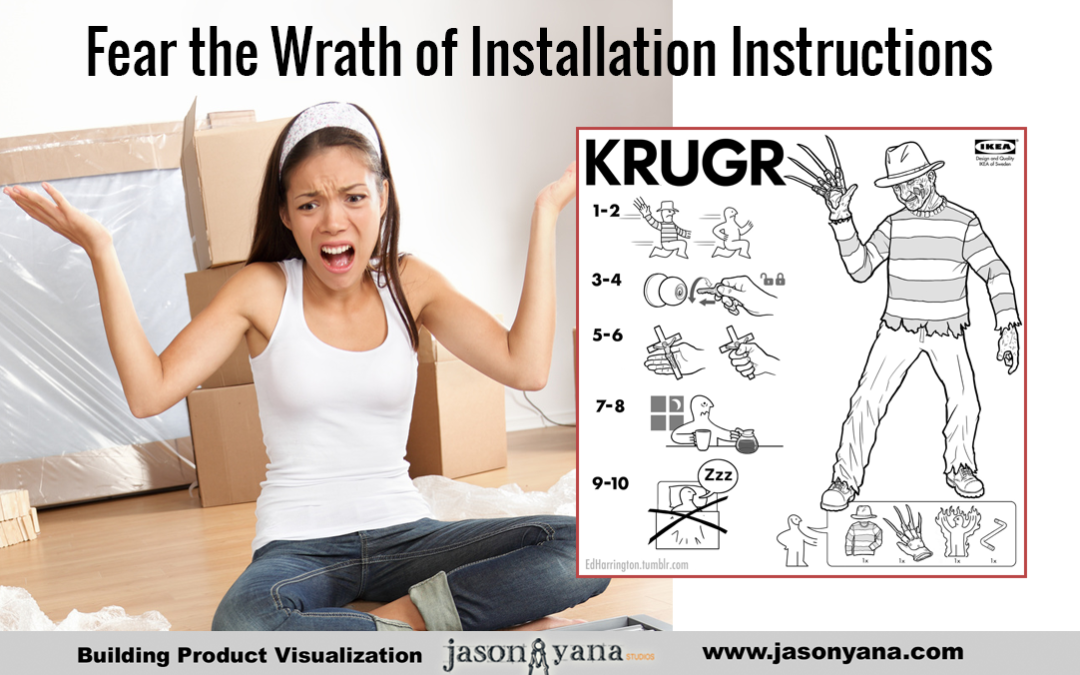
3 Horror Stories of Bad Installation Instructions – Save Your Building Material Customers!
We have all had a bad experience trying to assemble that new flat-packed piece of furniture we just purchased. The directions show the pieces effortlessly flying together, but it isn’t even clear which side of board H is which or how exactly to hold part A247 close enough to part Q72 so screw #27 can engage wing nut #AAA2.
To be stumped by instructions at some point has almost become an essential part of the human experience, and stories about frustrating, badly presented installation or setup instructions are now ubiquitous. We had some fun bringing a few of those stories here, just to put it into perspective for you in the hopes that you save your building materials customers from this sort of frustration.
Story 1: Barbie’s House of Horrors
You would think that in the age of 140 character limits, something would carry over to the world of instruction manuals. Au contraire, the manuals remain as bad as they ever have been; case in point the Barbie Dream House. You can find no shortage of horror stories on google of parents struggling to get this pink mansion built. The reason? The instructions feature vague, over-packed and unlabeled picture portions for one. Secondly, the text is reduced to an illegible state due to the amount squeezed on a page. These features go hand-in-hand to make Barbie’s home the last thing on a parent’s Christmas shopping list.
Story 2: The Domestic Disturbance

Illustrator and cartoonist Ed Harrington has created a funny collection of IKEA-style assembly instructions that show how to make iconic movie monsters.
In 2013, the Huffington Post ran an interesting story. A concerned neighbor living in Stromstad, Sweden called the police to report loud “banging” and “crying” coming from the house next door. When authorities arrived, they discovered that the banging emanated from the attempts of a couple to figure out instructions for and assemble a piece of IKEA furniture. Meanwhile, the crying was their baby who had just had enough of the noise.
Story 3: The Dresser of Broken Dreams
One thing many sets of instructions do is leave important notes out. Take the example that the commenter “deedee914” on this post. She was working to build a new dresser according to the instructions that came from IKEA, but they left out the fact that the dresser tends to fall over easily, leading to a broken hand for deedee914. The website did mention this little tidbit of information, but you would hope you would not have to go searching for that kind of information.
Don’t Make the Same Mistake for Your Building Materials Installation Instructions
So, as building product and building materials marketers, we are not selling furniture or barbie houses, the stakes are far higher for us. Poorly presented installation instructions will result in more than frustration and lost sales. If our products are not installed correctly, buildings will fail and lawsuits will follow.
I hope you enjoyed these fun stories and I hope you find beauty today, even when it’s not pretty.
Regards,
-JY
About the Author :
Jason Yana has 2 decades of experience in architectural technology, 3d graphics and construction marketing. This unique combination provides highly-effective visual representations of building products that fuel marketing and support efforts.
His award-winning body of work informs, inspires and educates building product customers.













